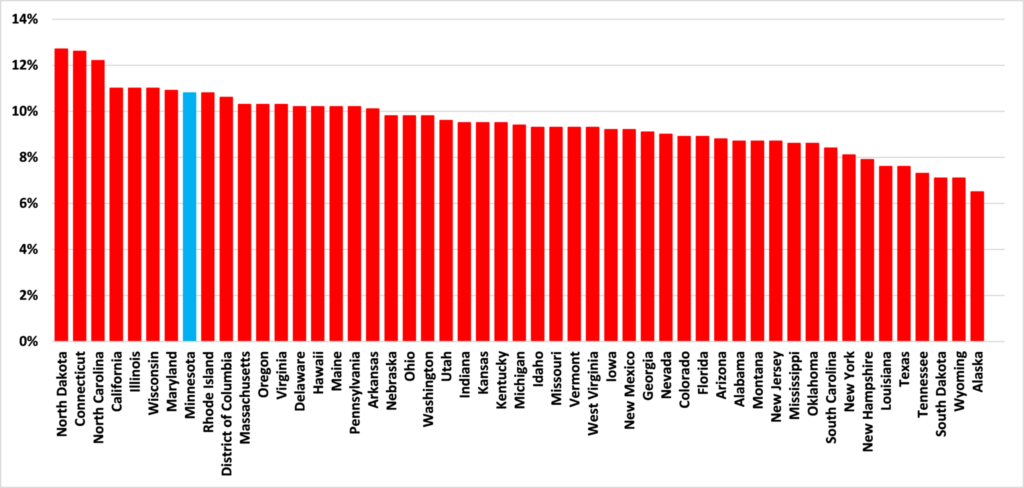Minnesota needs productive workers but it is losing those it already has
Over the last few weeks, I’ve gone over our new report, The State of Minnesota’s Economy: 2017, in a bit of detail. Having talked a bit about the state’s economy from the turn of the century to now, what might the future hold for Minnesota’s economy?
On Tuesday, I talked about how a more productive Minnesotan workforce could offset the declining share of the state’s population working to generate growth in per capita GDP. I suggested two ways of doing this; 1) attract and/or retain high productivity workers, and 2) improve the productivity of those workers who are less skilled. Yesterday, I addressed the point about attracting high productivity workers. Sadly, on the second point – retaining the high productivity workers we do have – our state performs badly.
Minnesota’s brain drain
If workers of above average productivity leave Minnesota, that will drag down the average of worker productivity. This will depress Total GDP. It will also lower GDP per capita as Total GDP declines by more than population.
There is evidence to show that this is currently happening. Using income as a proxy for productivity, Figure shows that Minnesota attracts low-income residents and loses higher-income ones. Furthermore, these losses are not limited to the so-called ‘rich’ who might be fleeing the state’s high top rate of tax. Between 2011 and 2015, Minnesota saw a net outflow of people earning more than a modest $25,000 annually.
Figure 1: Net flow of taxpayers and dependents to Minnesota by income of primary taxpayer, 2011 to 2015

Source: Internal Revenue Service
As we explain in the report, there is evidence that Minnesota’s high personal tax rates are a factor in these movements. As a share of personal income, state-local taxes are higher in Minnesota than in all but seven other states, as Figure 2 shows. Minnesota is one of the 43 states to have its own income tax, but the top rate – 9.85% on incomes over $156,911 – is higher than anywhere else apart from California, Maine, and Oregon. Equally significant, perhaps, is the fact that Minnesota’s lowest income tax rate of 5.35% is higher than the highest tax bracket in 23 states.
Figure 2: State-Local tax burdens per capita as a percentage of income

Source: The Tax Foundation
A common misconception is that this out-migration is primarily accounted for by ‘snow birds,’ older Minnesotans leaving the state for friendlier climates. This is not the case. As Figure 3 shows, between 2011 and 2015 Minnesota lost residents in every age group. Those less than 26 years old made up a large share of the loss. People aged 45 to 54 – people in the prime of their working lives – also made up a substantial share of the loss.
Figure 3: Net flow of taxpayers and dependents to Minnesota by age of primary taxpayer, 2011 to 2015

Source: Internal Revenue Service
Minnesota needs productive workers. Evidence suggests that, over the last few years, we have been losing them. This is not good for our state’s economy. Assuming that our high personal tax rates are an important factor in this, we need to revisit these. The state’s economy will suffer if we don’t.
John Phelan is an economist at Center of the American Experiment.